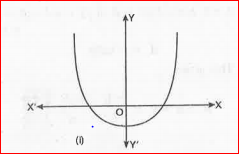From the pair of linear equations in the following problems and find their solutions (if they exist) by elimination method : Find the fraction which becomes equal to 1/3 when the numerator is increased by 1 and equal to 1/4 when denominator is increased by 1.Solution in Punjabi
Step by step video & image solution for From the pair of linear equations in the following problems and find their solutions (if they exist) by elimination method : Find the fraction which becomes equal to 1/3 when the numerator is increased by 1 and equal to 1/4 when denominator is increased by 1. by Maths experts to help you in doubts & scoring excellent marks in Class 10 exams.
Updated on:21/07/2023Topper's Solved these Questions
- PAIR OF LINEAR EQUATIONS IN TWO VARIABLESBOOK - MBDCHAPTER - PAIR OF LINEAR EQUATIONS IN TWO VARIABLESEXERCISE - EXERCISE
183 Videos
- INTRODUCTION TO TRIGONOMETRYBOOK - MBDCHAPTER - INTRODUCTION TO TRIGONOMETRYEXERCISE - EXERCISE
176 Videos
- POLYNOMIALSBOOK - MBDCHAPTER - POLYNOMIALSEXERCISE - EXERCISE
51 Videos
Similar Questions
4 chairs and 3 tables cost ? 2100 and 5 chairs and 2 tables cost ? 1750. Represent this situation algebraically and graphically.
View SolutionIn △ABC, right angled at A, if AB = 12 cm, AC = 5 cm and BC = 13 cm, find all the six trigonometric ratios of angle B.
View SolutionThe graphs of y = p (x) are given in figure below, for some polynomials p (x). Find the number of zeroes of p (x), in each case.
 .
.
View SolutionFrom the pair of linear equations in the following problems, and find their solutions (if they exist) by the elimination method:(i) If we add 1 to the numerator and subtract 1 from the denominator, a fraction reduces to 1. It becomes 12if we only add 1 to the denominator. What is the fraction?
View SolutionForm the pair of linear equations in the following problems, and find their solutions (if they exist) by the elimination method :
If we add 1 to the numerator and subtract 1 from the denominator, a fraction reduces to 1. it becomes 12 if we only add 1 to the denominator. What is the fraction ?
View SolutionForm the pair of linear equations in the following problems and find their solutions (if they exist) by any algebraic method :
A fraction becomes 13 when 1 is subtracted from the numerator and it becomes 14 when 8 is added to its denominator. find the fraction.
View Solutionनिम्नलिखित समस्याओं के रैखिक समीकरणों के युग्म बनाइए और प्रतिस्थापन विधि से उनके हल ज्ञात कीजिए:
(x) वह भिन्न ज्ञात कीजिए जिसमें अंश को 2 बढ़ा दिया जो, तो यह23 हो जाती है और जब हर को 4 बढ़ा दिया जाए तो यह47 हो जाती है।
View Solutionनिम्नलिखित समस्याओं के लिए रैखिक समीकरणों के युग्म बनाइए और निराकरण विधि से उनके हल (यदि हों) ज्ञात कीजिए : (v) भिन्न ज्ञात कीजिए जिसके अंश में 1 बढ़ा देने से यह 14बन जाती है और हर में 1 बढ़ाने पर यह 14 हो जाती है।
View SolutionFrom the pair of linear equations in the following problems, and find their solutions (if they exist) by the elimination method:(i) If we add 1 to the numerator and subtract 1 from the denominator, a fraction reduces to 1. It becomes 12if we only add 1 to the denominator. What is the fraction?
View SolutionForm the pair of linear equations in the following problems, and find their solutions (if they exist) by the elimination method :
If we add 1 to the numerator and subtract 1 from the denominator, a fraction reduces to 1. It becomes 12 if we only add 1 to the denominator. What is the fraction ?
View SolutionForm the pair of linear equations in the following problems and find their solutions (if they exist) by any algebraic method :
A fraction becomes 13 when 1 is subtracted from the numerator and it becomes 14 when 8 is added to its denominator. Find the fraction.
View SolutionForm the pair of linear equations in the following problems and their solutions (if they exist) by any algebraic method.
A fraction becomes 13 when 1 is subtracted from the numerator and becomes 14 when 8 is added to the denominator. Find the fraction.
View SolutionForm the pair of linear equations in the following problems and find their solutions (if they exist) by the elimination method:
If we add 1 to the numerator and subtract 1 from the denominator, a fraction reduces to 1. It becomes 12 if we only add 1 to the denominator. What is the fraction?
View SolutionForm the pair of linear equations in the following problems and find their solutions (if they exist) by any algebraic method:
A fraction becomes 13 when 1 is subtracted from the numerator and it becomes 14 when 8 is added to its denominator. Find the fraction.
View SolutionForm the pair of linear equations in the following problems and find their solution by substitution method : Find the fraction which becomes to 2/3 when the numerator is increased by 2 and equal to 4/7 when the denominator is increased by 4 .
View Solution
